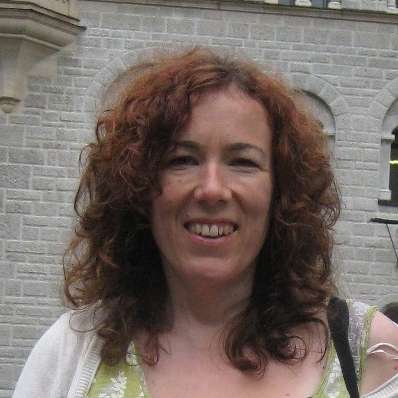Like a puzzle where you have to get from one word to a completely different one by changing single letters, Friday evening’s concert from Northern Sinfonia travelled from the sparse simplicity of Arvo Pärt’s Spiegel im Spiegel, to the richness of a Brahms symphony in three utterly logical musical steps.
Spiegel im Spiegel, played in the version for cello and piano by Guy Johnston and Kate Thompson, proved the perfect opening for a Friday evening concert, clearing all weekday cares from the mind with its stillness. The title means “mirror in the mirror” but this performance, sparkling with light, made me think more of sunshine on water. It’s a wonderfully simple piece to describe: rippling, subtly varying piano arpeggios, punctuated by bell-like chords, and very long single cello notes above it, but like much of Pärt’s music, it requires magnificent control before it can be effective. Guy Johnston and Kate Thompson balanced each other perfectly, and apart from a slight heaviness in some of the left-hand chords, this was a poised and very delicate performance.
The intermediate steps in the puzzle were made by means of two orchestral works with string solos. Vaughan Williams’ The Lark Ascending is another work that is suffused with light, and it grew slowly out of the stillness created by the previous piece: the opening string chords were delicate and hushed, whilst Bradley Creswick’s solo violin twittered above them at an astonishing speed. The young guest conductor, Ainārs Rubiķis, brought out a glowing warmth from the strings, but at times he was rather heavy-handed with the brass, allowing the horns to overpower the other parts. As the piece developed, Bradey Creswick’s love of folk music clearly showed through, as he allowed his solo line to swing gloriously, particularly in the dance-like central section. The final moments were spellbinding as his lark reached the upper limits of human hearing, and he kept the audience suspended in silence for almost thirty seconds, as though he could still hear the soaring bird.
Tchaikovsky’s Variations on a Rococo Theme for cello and orchestra cranked up the emotion another notch. Written at a time of great emotional turbulence as the homosexual Tchaikovsky was contemplating marriage, this is a piece in which, at times, there seems to be a battle raging between classical coolness and hotheaded Russian romanticism. The “rococo” theme itself was actually written by Tchaikovsky, in the style of early Mozart, and the first few variations are full of typically 18th-century formulations. Guy Johnston began elegantly, and allowed his sound to get bigger and richer as the piece developed. The penultimate variation is a heartfelt solo cello melody, full of Russian soul, before it ends on a cheeky pizzicato and launches into the mad cadenza-like romp of the final movement. The piece finally comes to land back in the rococo style. This last movement was wonderfully exciting, and was played with panache, especially the wonderful little moment when the flute frantically chases after the cello part.
Ainārs Rubiķis brought out the same swagger in Brahms’ Symphony no. 2 in D major, and although this worked for the bright sunshine of the last movement, particularly the trumpets at the end, it was less effective in the more contemplative first and second movements. Although he worked up a powerful sound for the climatic moments, and the famous lullaby melody rolled along beautifully, some of the quieter passages were rather stiff – Brahms needs a good deal of self-indulgence and there was a sense here that something was being held back. Moments like the lovely lilting oboe solo that opened the third movement and the energy of the final movement made this an enjoyable performance, though, and particularly brought out the powerful influence that Beethoven had on Brahms’ symphonic writing.


